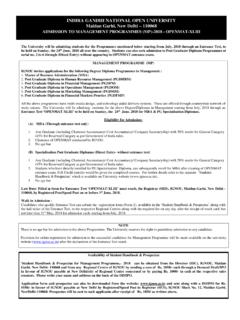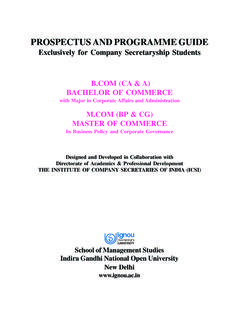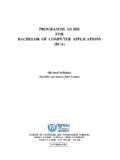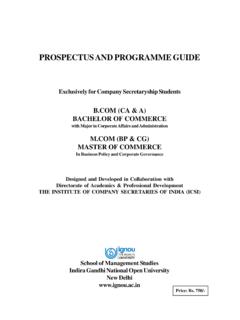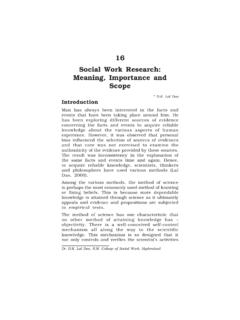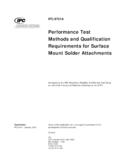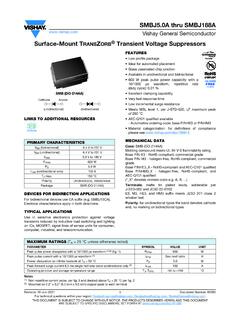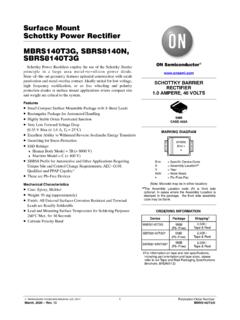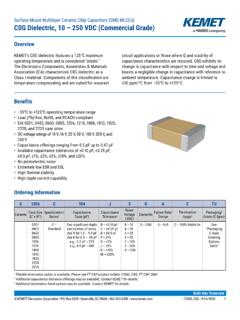Transcription of UNIT 6 ANGULAR MEASURING DEVICES Angular …
1 75 ANGULAR MEASURING DEVICES UNIT 6 ANGULAR MEASURING DEVICES Structure Introduction Objectives Line Standard ANGULAR MEASURING DEVICES Protractors Universal Bevel Protractors Face Standard ANGULAR MEASURING DEVICES Measurement of Inclines Spirit Level Clinometer Angle Comparators Summary Key Words Answers to SAQs INTRODUCTION There are a wide variety of geometric features that are measured in ANGULAR units. These varieties include ANGULAR separation of bounding planes, ANGULAR spacing conditions related to circle, digression from a basic direction etc. Because of these diverse geometrical forms, different types of methods and equipment are available to measure angles in common ANGULAR units of degree, minute and second.
2 Several factors come into picture in selection of suitable ANGULAR MEASURING instruments. These factors may be the size and general shape of the part, the location and ANGULAR accessibilities of the feature to be measured, expected range of angle variations, the required sensitivity and accuracy of measurement etc. Because of the different systems and techniques in ANGULAR MEASURING instruments, it is difficult to categorize them completely. As in linear measurement, they can be categorized in two groups. The first one is line standard instrument. It includes divided scales like protractors, bevel gauges. The second category of ANGULAR MEASURING instruments is called face standard instruments.
3 Sine bars and angle gauges falls in this category. In this unit, we will discuss both types of ANGULAR MEASURING DEVICES and the techniques used in determining the angle. In addition to that, we will have an overview of angle comparators (autocollimators). Objectives After studying this unit, you should be able to familiarise yourself with various types of ANGULAR MEASURING DEVICES , and choose a suitable ANGULAR MEASURING device according to the precision required. LINE STANDARD ANGULAR MEASURING DEVICES Line standard gives direct ANGULAR measurement from the engraved scales in the instruments. They are not very precise.
4 Hence they are not used when high precision is required. However, they can be used in initial estimation of the angles in measurement. We will discuss some of the line standard ANGULAR MEASURING DEVICES in the following sub-sections. 76 Metrology and Instrumentation Protractors It is the simplest instrument for MEASURING angles between two faces. It consists of two arms and an engraved circular scale. The two arms can be set along the faces between which the angle is to be measured. The body of the instrument is extended to form one of the arms, and this is known as the stock. It is the fixed part of the protractor and should be perfectly straight.
5 The other arm is in the form of a blade that rotates in a turret mounted on the body. One of the bodies of the turret carries the divided scale and the other member carries a vernier or index. The ordinary protractor measures angles only in degrees and used for non-precision works. By using ANGULAR vernier scale along with it, precision up to 5 can be achieved. Figure shows the diagram of a protractor. Figure : Protractor Universal Bevel Protractors It is an ANGULAR MEASURING instrument capable of MEASURING angles to within 5 min. The name universal refers to the capacity of the instrument to be adaptable to a great variety of work configurations and ANGULAR interrelations.
6 It consists of a base to which a vernier scale is attached. A protractor dial is mounted on the circular section of the base. The protractor dial is graduated in degrees with every tenth degree numbered. The sliding blade is fitted into this dial; it may be extended to either direction and set at any angle to the base. The blade and the dial are rotated as a unit. Fine adjustment are obtained with a small knurled headed pinion that, when turned, engages with a gear attached to the blade mount. The protractor dial may be locked in any position by means of the dial clamp nut. Measurement in a universal bevel protractor is made either by embracing the two bounding elements of the angle or by extraneous referencing, for example, the part and the instrument resting on a surface plate.
7 The vernier protractor is used to measure an obtuse angle, or an angle greater than 90 but less than 180 . An acute angle attachment is fastened to the vernier protractor to measure angles of less than 90 . The main scale is divided into two arcs of 180 . Each arc is divided into two quadrants of 90 and has graduation from 0 to 90 to the left and right of the zero line, with every tenth degree numbered. The vernier scale is divided into 12 spaces on each side of its zero (total 24). The spacing in the vernier scale is made in such a way that least count of it corresponds to 1/12th of a degree, which is equal to 5.
8 If the zero on the vernier scale coincides with a line on the main scale, the number of vernier graduations beyond the zero should be multiplied by 5 and added to the number of full degrees indicated on the protractor dial. Figure shows a diagram of a bevel protractor. 77 ANGULAR MEASURING DEVICES Figure : Universal Bevel Protractor SAQ 1 (a) What are the various line standard ANGULAR MEASURING DEVICES ? (b) Name the parts of a universal bevel protractor and state the functions of each. FACE STANDARD ANGULAR MEASURING DEVICES Face standard ANGULAR MEASURING DEVICES include angle gauges and sine bars. The measurements are done with respect to two faces of the MEASURING instruments.
9 Precision obtained in such instruments is more than the precision obtained in line standard ANGULAR MEASURING DEVICES . Some commonly used face standard ANGULAR MEASURING DEVICES are discussed in the following sub-sections. Sine Bar A sine bar is made up of a hardened steel beam having a flat upper surface. The bar is mounted on two cylindrical rollers. These rollers are located in cylindrical grooves specially provided for the purpose. The axes of the two rollers are parallel to each other. They are also parallel to the upper flat surface at an equal distance from it. Unlike bevel protractors sine bars make indirect measurements.
10 The operation of a sine bar is based on known trigonometric relationship between the sides and the angle of a right angle triangle. Here, dimension of two sides determine the size of the third side and of the two acute angles. The accuracy attainable with this instrument is quite high and the errors in ANGULAR measurement are less than 2 seconds for angle up to 45 . Generally, right-angled triangle is obtained by using a horizontal and precise flat plate on which gage blocks are stacked in the direction normal to the plane of the plate. Sine block itself is not a MEASURING instrument. It acts as an important link in the angle MEASURING process.
